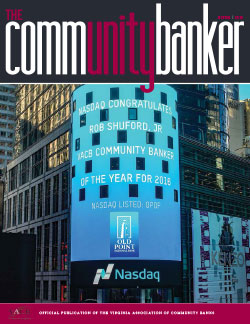Cybersecurity customer education: A marketing campaign?
By: Stephanie Chaumont and
Lauren Wiley
Publication: Nebraska Banker, November/December 2016

One of the difficult tasks banks continue to face is how do you educate your customers on the importance of cybersecurity? You send inserts with your statements and provide pamphlets in your brick and mortar branch, but what is being absorbed?
On the other hand, when you are marketing, you target your audience through TV ads, flyers, magazines, tradeshows, signage, etc. – a variety of channels to reach a wide audience base. Try to think of educating your customers in the same way you would market to them. After all, one of the roles of marketing is to educate. As with marketing, you can't expect to educate your target audience about cybersecurity through just one channel. So here are some ideas and channels to consider for providing cybersecurity education:






 Skimmers, tastic thief, sniffers, Internet of Things… you may or may not know what these things are and how they pertain to attacks. A simple online search for hacking equipment returns a variety of results for inventions made for the sole purpose of infiltrating your corporate network. Most people envision a hacker as a guy in his mom's basement building sophisticated hardware. But it's really much simpler. The reality is… it's very easy to acquire usernames and passwords without a substantial monetary investment. Most of the successful attacks you read about today began with very humble beginnings: just a phone call or email.
Skimmers, tastic thief, sniffers, Internet of Things… you may or may not know what these things are and how they pertain to attacks. A simple online search for hacking equipment returns a variety of results for inventions made for the sole purpose of infiltrating your corporate network. Most people envision a hacker as a guy in his mom's basement building sophisticated hardware. But it's really much simpler. The reality is… it's very easy to acquire usernames and passwords without a substantial monetary investment. Most of the successful attacks you read about today began with very humble beginnings: just a phone call or email.  Have you ever left your garage door open or forgot to lock the front door? It happens. When I was young, almost every day as we were on the way to school, my mom would ask, "Did I shut the garage door?" Sometimes we felt sure, but other times we turned around to go check. Now that I own my first house, I completely understand this frustration. It's just not a thing I always remember to do.
Have you ever left your garage door open or forgot to lock the front door? It happens. When I was young, almost every day as we were on the way to school, my mom would ask, "Did I shut the garage door?" Sometimes we felt sure, but other times we turned around to go check. Now that I own my first house, I completely understand this frustration. It's just not a thing I always remember to do. If I were to ask you to list your top security threats, how would you respond? No doubt many would mention cybersecurity, seemingly the hottest topic at banking conventions, forums and with examiners. A Google search for "top cybersecurity threats" produces lists like these:
If I were to ask you to list your top security threats, how would you respond? No doubt many would mention cybersecurity, seemingly the hottest topic at banking conventions, forums and with examiners. A Google search for "top cybersecurity threats" produces lists like these: If one took a geographic look at many internal networks, they might see something that reminded them of the Great Plains: flat, open, and unregulated. They would find a terrain that allows someone to get from one place to another by traveling in a straight line. Those terms are fine when applied to the Great Plains; however, the time has come to fence in and segregate internal networks.
If one took a geographic look at many internal networks, they might see something that reminded them of the Great Plains: flat, open, and unregulated. They would find a terrain that allows someone to get from one place to another by traveling in a straight line. Those terms are fine when applied to the Great Plains; however, the time has come to fence in and segregate internal networks.